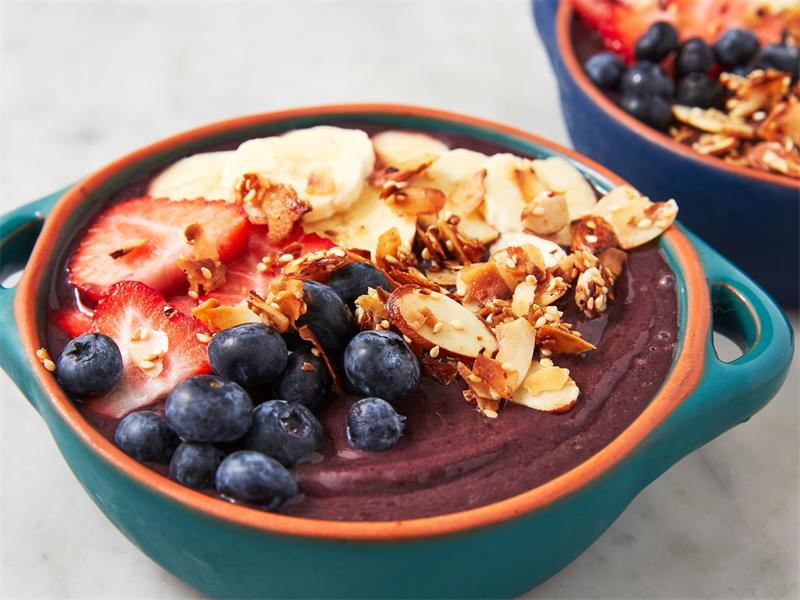Contents
The Power of Circuit Training: A Guide to Achieving Your Fitness Goals
Defining Circuit Training: The Ultimate Workout Routine
Have you ever heard of circuit training? If not, don’t worry!
Circuit training is a type of workout routine that involves a series of exercises performed in quick succession with short rest periods in between. This popular fitness method combines resistance training and cardiovascular exercise to create an intense full-body workout.
Circuit training has been around for almost 50 years and was originally developed for athletes who needed to maintain high levels of endurance and strength during their competitive seasons. However, over the years, circuit training has gained popularity as an effective way to achieve overall fitness goals.
The History: How Circuit Training Became a Fitness Trend
Circuit training was first introduced in 1953 by R.E. Morgan and G.T. Anderson, who were both professors at the University of Leeds in England. They developed this workout technique as a way to help their athletes build endurance without sacrificing muscle mass or strength.
By the 1970s, circuit training had become a staple in fitness centers across Europe and North America. Today, it is still widely used by personal trainers, fitness enthusiasts, and professional athletes all over the world.
The Importance: Why You Should Incorporate Circuit Training into Your Fitness Routine
If you’re looking for a workout routine that will help you achieve your fitness goals quickly and efficiently, then circuit training may be just what you need! Incorporating this type of workout into your routine can lead to numerous benefits such as improved cardiovascular endurance, increased muscle tone and definition, enhanced flexibility and balance, boosted metabolism, weight loss, and reduced risk of injury.
Plus, with so many different exercises available for use in circuit workouts—from bodyweight exercises like push-ups and squats to weighted movements like bicep curls and deadlifts—there’s no reason why anyone can’t benefit from this effective training method. So, whether you’re a seasoned athlete or just starting out, circuit training can help you take your fitness to the next level!
The Many Benefits of Circuit Training
Circuit training is a highly effective workout routine that offers numerous benefits for individuals of all fitness levels and goals. Here are some of the most significant reasons why you should consider incorporating circuit training into your fitness regimen:
Increased Cardiovascular Endurance and Strength
Circuit training is an excellent way to improve cardiovascular endurance, which is the ability of your heart, lungs, and blood vessels to work together efficiently during exercise. By performing a series of exercises with little rest in between, your heart rate stays elevated throughout the entire workout.
This sustained level of activity helps improve the overall health of your cardiovascular system. In addition to boosting endurance, circuit training also helps increase overall strength.
The combination of resistance exercises and cardio-intensive moves challenges muscles throughout the body in a unique way that traditional strength training or cardio workouts alone cannot accomplish. As a result, circuit training can help you build lean muscle mass while improving overall physical performance.
Improved Muscle Tone and Definition
One major benefit of circuit training is its ability to refine muscle tone and definition throughout the entire body. The combination of high-intensity resistance exercises with short rest periods creates an environment for your muscles to work harder while burning more calories through increased metabolic rates.
Performing compound movements like squats or lunges alongside upper-body exercises like push-ups or pull-ups can yield impressive results by targeting multiple muscle groups simultaneously. Over time, this type of workout can lead to visible changes in muscle definition as well as improved overall body composition.
Enhanced Flexibility and Balance
Circuit training routines often include dynamic stretching movements that help improve flexibility, mobility, and balance as well as reduce the risk of injury during exercise. These stretches target key areas such as hips, shoulders, and hamstrings among others thus allowing a better range of motion during workouts.
Balance-improving exercises often involve shifting your weight and center of gravity, which can improve balance and stability over time. Over time, incorporating these stretches and exercises into your workouts can not only improve performance during exercise but also reduce the likelihood of injury during daily activities.
Boosted Metabolism and Weight Loss
Circuit training is an excellent way to boost metabolism and burn more calories both during and after exercise. Because of its high-intensity nature, circuit training workouts stimulate the body to continue burning calories for up to 24 hours after the workout has ended. This phenomenon is known as excess post-exercise oxygen consumption (EPOC) or the “afterburn” effect.
Additionally, because circuit training engages both cardiovascular and muscular systems at once, it helps maximize calorie burn while minimizing workout duration. In turn, circuit training becomes a highly efficient method for those looking to lose weight or reduce body fat percentage.
Reduced Risk of Injury
By incorporating a variety of exercises into a circuit routine that targets different muscle groups throughout the body, you are less likely to overuse specific muscles or create muscle imbalances that could lead to injury. Additionally, dynamic stretches help improve range-of-motion which further reduces risks associated with tight or stiff muscles. By providing an overall balance in muscle activation throughout the entire body rather than focusing solely on one area or type of exercise (like running), circuit training allows individuals to reap benefits without putting themselves at risk for injury – something especially important as we age.
How to Do Circuit Training
Preparing for Circuit Training
Before starting circuit training, it’s important to determine your fitness level and goals. Ask yourself what you hope to achieve through circuit training.
Is it weight loss, improved strength, or better overall fitness? Additionally, consider any limitations or health concerns that may impact your ability to participate in certain exercises.
Once you have a clear understanding of your goals and limitations, choose exercises that target different muscle groups. This will ensure that you get a full-body workout and prevent overuse injuries.
You can find exercise ideas online or consult with a personal trainer for guidance. Gather necessary equipment.
Depending on the exercises you choose, you may need weights, resistance bands, a stability ball, or other equipment. Start with basic equipment and add more as needed.
Designing a Circuit Training Workout
To create an effective circuit training workout, start by setting up stations with different exercises. These stations should be arranged in a way that allows for efficient movement between each station. A basic setup might include stations for upper-body exercises (such as push-ups), lower-body exercises (such as squats), and cardiovascular exercises (such as jumping jacks).
Once you have set up the stations, determine the number of reps and sets for each exercise based on your fitness level and goals. Beginners may want to start with one set of 8-10 reps at each station while more advanced exercisers may aim for 2-3 sets of 12-15 reps.
Decide on rest periods between exercises based on your fitness level and goals. Shorter rest periods (30-60 seconds) will increase intensity while longer rest periods (1-2 minutes) will allow for more recovery time between sets.
Sample Circuit Training Workouts
Here are three sample circuit training workouts to get you started: 1. Full-body workout using bodyweight exercises:
– Jumping jacks (cardiovascular) x 1 set of 30 reps – Squats (lower body) x 2 sets of 12 reps
– Push-ups (upper body) x 2 sets of 10 reps – Plank (core) x 1 set of 30 seconds
2. Upper body-focused workout using weights: – Bicep curls (upper body) x 3 sets of 12 reps
– Overhead press (upper body) x 3 sets of 10 reps – Tricep kickbacks (upper body) x 3 sets of 10 reps
3. Lower body-focused workout using resistance bands: – Resistance band squats (lower body) x 2 sets of 12 reps
– Resistance band deadlifts (lower back and hamstrings) x 2 sets of 10 reps – Glute bridges with resistance band (glutes and core muscles) x1 set for a duration interval
Remember to modify exercises or rest periods as necessary based on your fitness level and goals. With consistency and effort, circuit training can be an effective way to improve your overall fitness level and achieve your goals.
Tips for Success in Circuit Training
Circuit training can be a challenging workout, but it’s important to start slowly and gradually increase the intensity. It’s always better to start with a lower intensity and work your way up rather than jumping straight into a high-intensity workout that could result in injury or burnout.
When you’re just starting out, focus on perfecting your form with each exercise. Proper form is crucial for preventing injuries and getting the most out of each movement.
If you’re unsure about proper form, consider working with a personal trainer who can guide you through the movements and correct any mistakes. Additionally, proper form means activating the right muscles during each exercise, which leads to better overall results.
Incorporate Variety to Avoid Boredom
Circuit training offers endless possibilities when it comes to exercises and equipment used. It is essential to incorporate variety into your workouts so that they do not become monotonous or boring over time. Mixing up your exercises also prevents plateauing, whereby your body gets too accustomed to a particular exercise routine resulting in fewer gains being made over time.
You can switch things up by using different types of equipment such as dumbbells, kettlebells or resistance bands. Consider alternating between bodyweight exercises like pushups and squats versus weight-bearing moves like bench presses and deadlifts where appropriate.
Furthermore, varying the duration of rest periods between sets can help keep things fresh as well as increasing or decreasing reps for specific workouts depending on how you feel that day. Also, try adding new movements that target specific muscle groups you may have overlooked in previous routines.
Conclusion
Circuit training is a fantastic way to achieve all-around fitness and good health. With its combination of strength training, cardio, and flexibility exercises, it provides benefits that are hard to match with other workout formats. The following are some of the key benefits that we have explored in this article.
Firstly, circuit training is excellent for improving cardiovascular endurance and promoting weight loss. By doing high-intensity workouts in quick succession, you boost your heart rate and metabolism, resulting in more calories being burned.
This makes it ideal for people who want to lose weight without spending hours on the treadmill. Secondly, circuit training helps build muscle strength and tone throughout the body by engaging different muscle groups during each exercise.
It also enhances flexibility and balance through stretching exercises that can improve the range of motion while reducing stress on joints. Circuit training reduces the risk of injury by strengthening your core muscles, which helps stabilize your body during physical activities.
When done correctly with proper form and technique under guidance from a certified trainer or professional coach, circuit training can be incredibly beneficial for overall health. There are many reasons why you should incorporate circuit training into your fitness routine today!
Not only does it provide an all-around workout that engages multiple muscle groups at once but it also promotes cardiovascular endurance while reducing risks associated with injury when done correctly. So take advantage of these benefits by incorporating some circuit-style workouts into your routine now – whether at home or at a gym near you!












